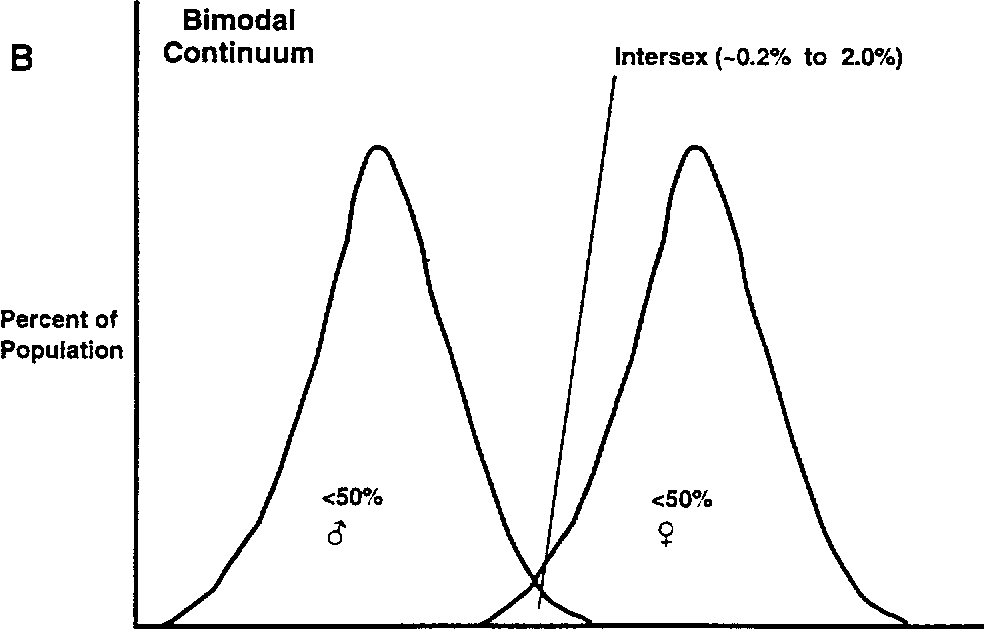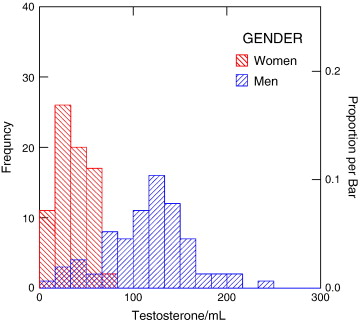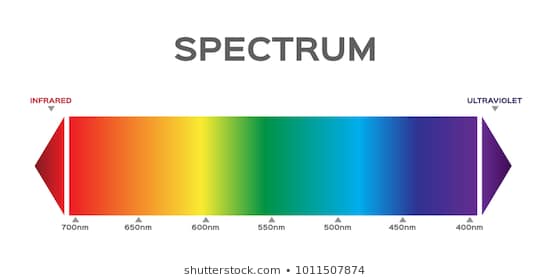Summary
The claim that sex is a spectrum is not an accurate conclusion supported by current research and understanding of sex in biology. It is perhaps based on misunderstandings of medical terms and anthropocentric ideas of sex. This answer also points out what I regard as some serious problems with the arguments put forward here by other answers.
Answer
There are a couple of answers here that provide "definitions of sex" and claims about sex being continuous or a bimodal distribution which are not supported at all.
The top answer does not provide any actual definitions of sex and seemingly misunderstands the "definitions" they believe describe sex. To start with, the author gives possible definitions from a wikipedia talk page on sex differentiation in humans, not sex. The claim that definitions of sex were provided here is incorrect. https://en.wikipedia.org/wiki/Sexual_differentiation_in_humans.With regard to sex his first definition, sex has never been defined by karyotype, as plenty of organisms have males and females with different sex chromosome combinations or no sex chromosomes at all. Furthermore, the Karyotypes listed are specific to males or females. His own sources, https://www.sciencedirect.com/science/article/abs/pii/B9780123864567015057?via%3Dihub and https://rarediseases.org/rare-diseases/xyy-syndrome/ not only do not define sex by sex chromosomes but name some of the sex chromosome abnormalities as being sex specific. The Quigly scale in no way or form defines sex, it's just a convenient scale so physicians can describe the appearance of external genitals. There's also the Prader scale. It's categorical with only a set of discrete categories, so I have no idea why it's being claimed to be continuous, let alone why it would define sex. His own citation, https://en.wikipedia.org/wiki/Quigley_scale says does not claim it defines sex and highlights it does not match his description at all. There is no literature that describes a person's sex as "3" on the Quigly scale for example.
Another issue is the answer also provides an "endocrinological" definition using a reference, https://www.ncbi.nlm.nih.gov/pmc/articles/PMC6391653/, that doesn't support it. Said reference does not define sex by hormone levels, in fact I think it bizarre to even claim sex is defined by hormone levels as they constantly change and also vary throughout life. I'd be very interested to hear about the testosterone levels of male ginkgos.
I have no idea why it is being argued that humans have some special definition of sex when sex is not a specifically human thing. Humans have male and female sexes for the same reason all other anisogamous species do. Literature on sex establishes that the sexes are two reproductive roles in anisogamy predicated on two differing types of gamete. This understanding is well demonstrated both in taxonomy and literature (Parker et al. 1972, Lehtonen et al. 2014, "The Biology of Reproduction" pg 112 by Fusco and Minelli, 2019.)
A second answer talks about sex having a bimodal distribution. It includes a graph (Fig.1) from Blackless (2000), but there are several problems with this. First, the graph in question is conceptual in nature and has no real data nor any clear methodology. In fact, looking at the axes, what's being measured doesn't even make sense. Given it says "Variability in size or composition of gonads, genital morphology, chromosomes and/or hormonal physiology", the authors don't even appear to be sure of what is being measured. I've never seen any graph with an "and/or" in it. Also keep in mind this isn't even a conceptual graph of sex but sexual dimorphism. The authors do not argue that sex has a bimodal distribution. Another issue is that it actually isn't even a bimodal distribution but just two normal distributions plotted on a single graph. A bimodal distribution does not have separate curves. Statistically, bimodal distributions require two well separated local maxima, which means the random variable must be quantitative. Sex chromosome combinations therefore cannot have a bimodal distribution, contrary to the assertions in that answer. The distribution the posted of hormones is clearly not a measurement of sex, as it readily recognizes that that there are two separate distributions.
I think a lot of confusion is misunderstandings of medical diagnostic terminology(Money, John; Hampson, Joan G; Hampson, John (October 1955). "An Examination of Some Basic Sexual Concepts: The Evidence of Human Hermaphroditism". Bull. Johns Hopkins Hosp. 97 (4). Johns Hopkins University: 301–19) for describing patients with atypical sex development, etc. You have terms such as "chromosomal sex", etc that are not and never were definitions of sex. There are no such things as "chromosomal sexes" and "phenotypic sexes". Strictly speaking, spectra are measurements along a continuous variable. A continuous variable has infinite possible values, thus if sex was a "spectrum", then each of the infinite points are a different sex. Biology literature does not describe infinite sexes, let alone more than two in anisogamy. Therefore the claim that sex is a spectrum is not supported by research. It is important to distinguish sex from characteristics associated with sex in humans and that while we can describe how those characteristics individually vary that is not the same as sex being a spectrum.

 (these are cartoons of external genitalia, in case that's not obvious)
(these are cartoons of external genitalia, in case that's not obvious)


